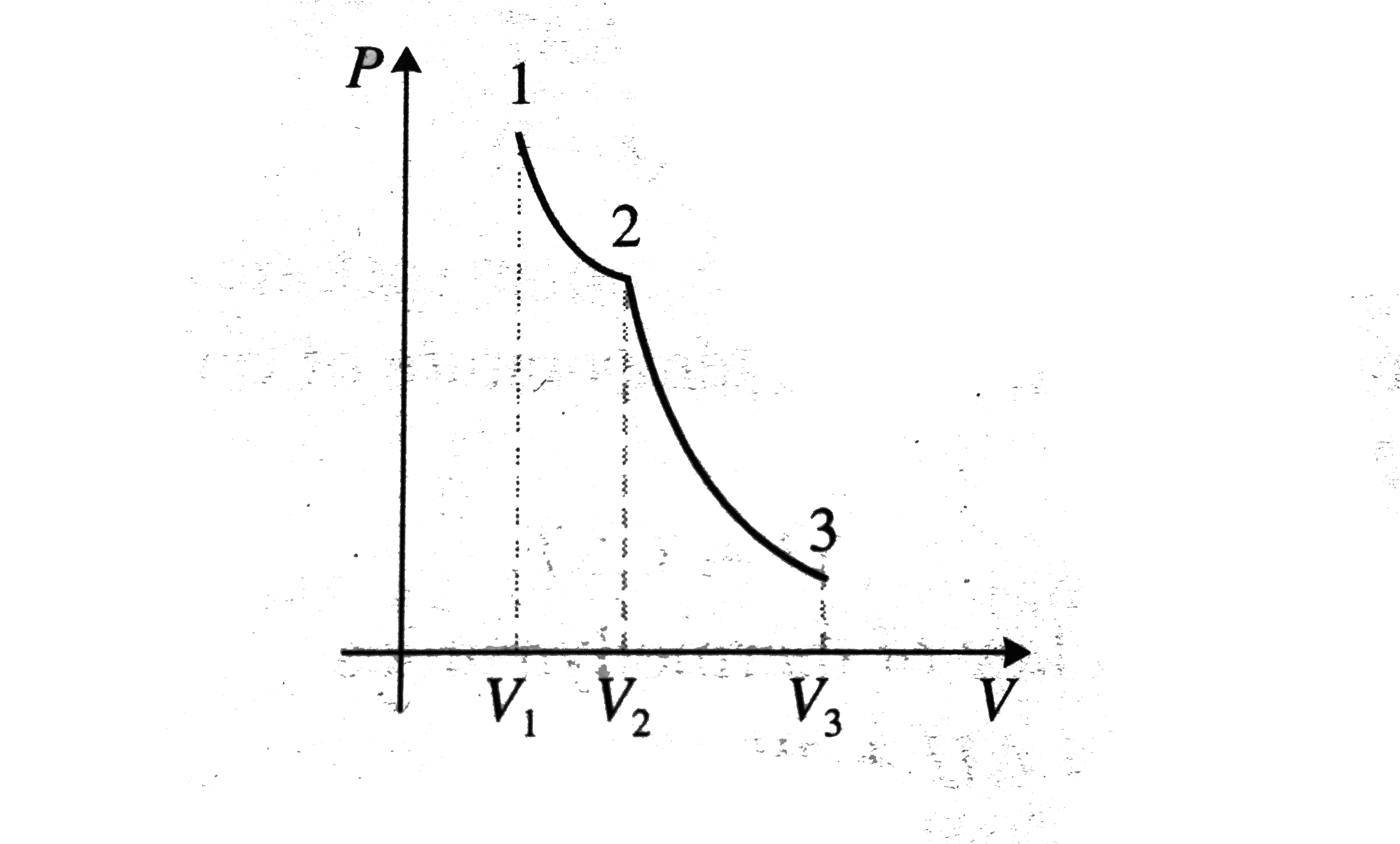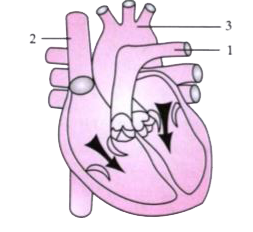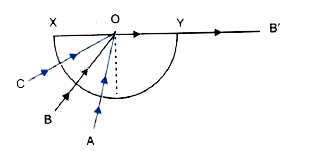Take one flower each of the families Fabaceae and Solanaceae and write its semi-technical description. Also draw their floral diagram after studying them.
Step-by-Step Solution
1. Choose Flowers from the Families
- Fabaceae: Select a flower from the Fabaceae family, such as Cajanus cajan (Pigeon pea).
- Solanaceae: Select a flower from the Solanaceae family, such as Solanum nigrum (Black nightshade).
2. Semi-Technical Description of Fabaceae Flower (Cajanus cajan)
- Family: Fabaceae
- Inflorescence: Racemose type, unbranched arrangement.
- Flower Type: Zygomorphic (can be divided into two equal halves in one plane).
- Calyx: Composed of 5 sepals (pentasepalous).
- Corolla: Composed of 5 petals (pentapetalous).
- Gynoecium: Superior ovary with marginal placentation.
- Fruit: Non-endospermous seeds.
3. Floral Diagram of Fabaceae
- Draw a diagram showing:
- The arrangement of sepals and petals.
- The position of the ovary and its placentation.
- Indicate the zygomorphic nature of the flower.
4. Semi-Technical Description of Solanaceae Flower (Solanum nigrum)
- Family: Solanaceae
- Inflorescence: Axillary type.
- Flower Type: Actinomorphic (can be divided into two equal halves in multiple planes).
- Calyx: Composed of 5 sepals (pentasepalous).
- Corolla: Composed of 5 petals (pentapetalous).
- Gynoecium: Superior ovary with axial placentation.
- Fruit: Endospermous seeds.
5. Floral Diagram of Solanaceae
- Draw a diagram showing:
- The arrangement of sepals and petals.
- The position of the ovary and its placentation.
- Indicate the actinomorphic nature of the flower.
- Fabaceae: Select a flower from the Fabaceae family, such as Cajanus cajan (Pigeon pea).
- Solanaceae: Select a flower from the Solanaceae family, such as Solanum nigrum (Black nightshade).
- Family: Fabaceae
- Inflorescence: Racemose type, unbranched arrangement.
- Flower Type: Zygomorphic (can be divided into two equal halves in one plane).
- Calyx: Composed of 5 sepals (pentasepalous).
- Corolla: Composed of 5 petals (pentapetalous).
- Gynoecium: Superior ovary with marginal placentation.
- Fruit: Non-endospermous seeds.
- Draw a diagram showing:
- The arrangement of sepals and petals.
- The position of the ovary and its placentation.
- Indicate the zygomorphic nature of the flower.
- Family: Solanaceae
- Inflorescence: Axillary type.
- Flower Type: Actinomorphic (can be divided into two equal halves in multiple planes).
- Calyx: Composed of 5 sepals (pentasepalous).
- Corolla: Composed of 5 petals (pentapetalous).
- Gynoecium: Superior ovary with axial placentation.
- Fruit: Endospermous seeds.
- Draw a diagram showing:
- The arrangement of sepals and petals.
- The position of the ovary and its placentation.
- Indicate the actinomorphic nature of the flower.
Topper's Solved these Questions
- MORPHOLOGY OF FLOWERING PLANTS BOOK - ICSECHAPTER - MORPHOLOGY OF FLOWERING PLANTS EXERCISE - Ncert Exercises (Differentiate Between )
21 Videos
- MORPHOLOGY OF FLOWERING PLANTS BOOK - ICSECHAPTER - MORPHOLOGY OF FLOWERING PLANTS EXERCISE - REVIEW QUESTIONS (I. MULTIPLE CHOICE QUESTIONS)
24 Videos
- MORPHOLOGY OF FLOWERING PLANTS BOOK - ICSECHAPTER - MORPHOLOGY OF FLOWERING PLANTS EXERCISE - Test Your Progress (HOTS)
4 Videos
- MORPHOLOGY AND ANATOMY OF DIFFERENT SYSTEM OF COCKROACH BOOK - ICSECHAPTER - MORPHOLOGY AND ANATOMY OF DIFFERENT SYSTEM OF COCKROACH EXERCISE - Long Answer type Questions
6 Videos
- NEURAL CONTROL AND CO-ORDINATION BOOK - ICSECHAPTER - NEURAL CONTROL AND CO-ORDINATION EXERCISE - NCERT EXERCISES WITH ANSWER (DIFFERENTIATE BETWEEN)
11 Videos
Similar Questions
Take one flower each of families Fabaceae and Solanaceae and write its semitechnical description. Also draw their floral diagrams after studying them.
View SolutionOne mole of a perfect gas, initally at a pressure and temperature of 105N/m2 and 300 K, respectively, expands isothermally unitl its volume is doubled and then adiabatically until its volume is again doubled. Find final pressure and temperature of the gas Find the total work done during the isothermal and adiabatic processes. Given γ=1.4. Also draw the P-V diagram for the process.

View SolutionGive a description of the family Fabaceae taking the following point into consideration :
(i) systematic position in Bentham and Hooker's system of classification
(ii) salient features
(iii) inflorescence
(iv) floral diagram and floral formula
(v) botanical names and economic importance of five common plants.
View SolutionThe diagram given below represents the human heart in one phase of its functional activities. Study the same and answer the questions that follow :

Draw well labelled diagrams of part 1 and 2 to show the structural differences between them.
View SolutionFigure shows the section of a semi-circular glass slab having its centre at O. three rays of light A,B and C of the same colour are incident on the slab and strike on the edge XY at the point O. the light ray B suffers refraction along OB'.

(a) On the diagram, mark the critical angle by C.
(b) The rays enter the slab undeviated. give reason.
(c) Draw the path of rays A and C after they strike the edge XY.
(d) Name the phenomenon which the rays A and C exhibit.
View SolutionA device X is connected across an ac source of voltage V=V0sinωt. The current throught X is given as I=I0sin(ωt+π2)
(a) Identify the device X and write the expression for its reactance.
(b) Draw graph showing variation of voltage and current with time over one cycle of ac, for X.
How does the reactance of the device X vary with frequency of the ac? Show this variation graphically.
(d) Draw the phasor diagram for the device X.
View SolutionThere are 40 students in Class X of a school of whom 25 are girls and 15 are boys. The class teacher has to select one student as a class representative. She writes the name of each student on a separate card, the cards being identical. Then she puts cards in a bag and stirs them thoroughly. She then draws one card from the bag. What is the probability that the name written on the card is the name of (i) a girl?(ii) a boy?
View SolutionThere are 40 students in class X of a school of whom 25 are girls and 15 are boys. The class teacher has to select one student as a class representative. She writes the name of each student on a separate card, the cards being identical. Then she puts cards in a bag and stirs them thoroughly. She then draws one card from the bag. What is the probability that the name written on the card is the name of (i) a girl? (ii) a boy?
View Solution(a) If the image formed by a mirror for all positions of the object placed in front of it is always diminished, erect and virtual, state the type of the mirror and also draw a ray diagram to justify your answer. Write one use such mirrors are put to and why?
(b) Define the radius of curvature of spherical mirrors. Find the nature and focal length of a spherical mirror whose radius of curvature is +24 cm.
View SolutionDraw a labelled diagram of LS. of an embryo of grass (any six labels). (b) Give reason for each of the following: (i) Anthers of angiosperm flowers and described as dithecous. (ii) Hybrid seeds haveto be produced year after year.
View Solution
